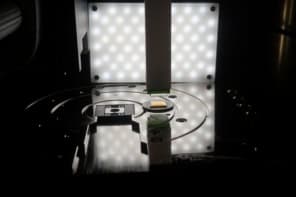Hopes of building electronic devices from carbon could become reality thanks to new measurements of artificially synthesized diamond. Jan Isberg of Uppsala University in Sweden together with colleagues at ABB in Sweden and De Beers Industrial Diamonds in the UK have used chemical vapour deposition to grow diamond crystals that have extremely mobile charge carriers. Diamond grown in this way could be used in devices that have higher power, wider bandwidths and higher operating temperatures than conventional devices (J Isberg et al. 2002 Science 297 1670).
Diamond is a semiconductor whose excellent physical properties – such as its high thermal conductivity and large band gap – make it the ideal material for devices such as power diodes and high-frequency field effect transistors. However, in its natural form it has too many defects and impurities to be useful in such devices.
Diamond has been produced artificially for nearly fifty years, by heating and compressing graphite using high-pressure high-temperature (HPHT) technology. However, like the naturally occurring form of the material, HPHT diamonds suffer from too many defects and impurities, and, measuring just a few thousandths of a millimetre across, have been too small to be useful for electronic applications.
More recently, techniques have been developed in which single crystals of diamond are deposited onto a substrate from the vapour phase using a hydrocarbon plasma. But diamonds produced in this way are made up of many crystals at different orientations. This is a problem because grain boundaries impede electronic performance.
Isberg and colleagues have now overcome these problems by combining the two techniques, an approach that has been developed over the last two years. By using a substrate made from HPHT diamond many millimetres across, the crystal grains that result from plasma deposition can be made to point in the same direction. Using this technique the researchers have manufactured sizeable diamond crystals with electronic properties better than predicted by theory, and have been able to control the conductivity of the crystals by doping the vapour with boron.
The researchers measured a property of their synthesized diamond known as mobility – a constant that relates the velocity of a charge carrier (an electron or a hole) to the electric field that propels the charge carrier. They discovered that when subjected to low electric fields, the electrons in their diamond have a mobility (measured in square centimetres per volt second) of 4500, and the holes have a mobility of 3800. It is the latter figure that suggests that diamond has great potential in electronic devices since it is significantly greater than the mobility of electrons in SiC and GaN, two semiconductors that are also being investigated for advanced electronics applications.
Isberg says that diamond-based devices will enter the market once the process technology has been refined and larger diamond substrates produced. He believes that certain devices, such as radiation detectors and Schottky diodes, could be developed within the next couple of years, while more complex devices such as field-effect transistors will take longer.



